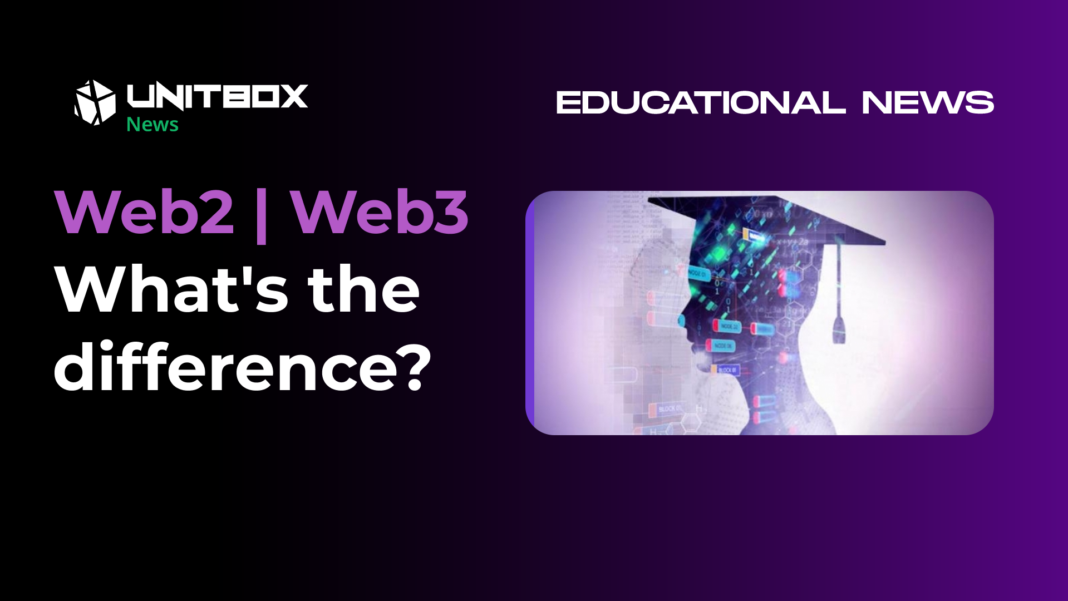Contents
The Difference between Web2 and Web3
If you are acquainted with the cryptosphere, then you must have encountered the terms “Web2” and “Web3.” You might be wondering about their definition and relevance to decentralized finance.
The Internet, as we know it, has achieved many milestones before reaching its current stage. Web2 and Web3 are generations of Internet services with unique variations in the user interaction with the Internet. This is also especially important in distinguishing how Web2 and Web3 shape and influence the user experience.
What is Web2?
Web2 refers to the second generation of internet services, which emphasized enabling users to interact with content on the web. Web2 encouraged and facilitated the growth and expansion of user-generated content alongside interoperability and usability for end users.
Web2 does not focus on modifying technical specifications; on the contrary, it emphasizes shifting the design of the web pages and the ways of using them. Consequently, Web2 encouraged interaction and collaboration among users in Peer-to-Peer (P2P) transactions.
Features of Web2
Some of the notable distinctive features and traits of Web2 include:
- Web2 enables the free sorting of information and this enables collective retrieval and classification of information by users.
- It ensures that the Internet has dynamic content highly responsive to user input.
- Provides channels for information flow between site owners and users.
- Enables web content accessibility from mobile devices, televisions, multimedia consoles, and any internet-connected device.
- Most important is that Web3 allows users to participate in the creation and sharing of responsive content alongside collaboration prospects.
What is Web3?
Although Web2 offers advanced features, it still harbors several setbacks; some of these include security risks for personal data and massive centralized power to involved firms. This is where Web3 comes in; it operationalizes decentralization of the control of data creation, sharing, and transfers on the Internet.
Web3 also improves Web2’s infrastructure. It leverages an advanced metadata system to structure and arrange all types of data to make it readable for machines and humans.
Crucially, Web3 takes away the need for centralized intermediaries and introduces the universality of information.
Features of Web3
The main highlights of Web3 that are crucial in distinguishing it from Web2 include:
- It leverages artificial intelligence to provide results faster and access real-time insights.
- It enables users to leverage the potential of 3D graphics and visuals.
- Semantic web functionality – Web3 supports an understanding and meaning of works.
- Bolstered privacy and security.
- Web3 adopts advanced authorization mechanisms through encryption and distributed ledger technologies to secure user identity and data.
Web3 and GameFi
The gaming sector is leveraging the power of Web3 to bring together gaming and finance (GameFi). In GameFi, players and creators can accrue value in cryptocurrencies and non-fungible tokens (NFTs) through gameplay.
Web3 also allows for the creation of a decentralized finance (DeFi) environment to support the creation of blockchain games that allow interaction between players and games. This is especially the case in play-to-earn (P2E) projects that allow players to accrue value from their in-game success.
In P2E gaming, a player purchases an NFT to gain entry into a GameFi project, plays the game, and wins tokens. These in-game tokens can subsequently be converted into Ethereum (ETH), Bitcoin (BTC), and/or fiat currency.
Web3 takes the power away from the gaming studios in Web2 games. Players get to make critical decisions using their governance tokens in decentralized Web3 games; this is especially the case because Web3 allows the players to have community control based on shared interests.
Web3 and the Metaverse
Web3 is also central to the development and advancement of the metaverse concept. In this regard, games can be published as standalone apps or as parts of a metaverse. Metaverses are virtual words where participants can play games, attend events, do some shopping, and immerse themselves in the experience of the game.
The metaverse idea bolsters the new era of gaming that allows players to enjoy the experience of their chosen game while bolstering their chances to earn money.
Comparison between Web2 and Web3
| Criteria | Web2 | Web3 |
| Definition | The second generation focusing on interaction | Third generation focusing on decentralization and semantic learning. |
| Focus | Community development | Empowering individual users |
| Technologies | – HTML5
– AJAX – JavaScript – CSS3 |
– Artificial intelligence
– Machine learning – Decentralization protocols |
| Types of Applications | Web applications | Smart applications based on ML and AI. |
| State of Data | The network owns the data | Entities have ownership over the data, its use, and its sharing. |
| Features | – Enhanced interaction
– Introduction of web applications. |
– Smart, web-based functionalities and applications.
– Offers a better blend of knowledge representation and web technology. |
Takeaways
Web3 offers massive advantages over Web2; these include better data security, interactive platforms to enhance user experience, and decentralization, which democratizes the ownership and control of data and information/knowledge flow.
Web3 is at the core of the development of DeFi and GameFi; it offers an interactive platform for player involvement in gaming as well as allowing them to create value in the process.
? Choose and check play-to-earn Games and Yield Guilds: HUB.UNITBOX.IO — the largest GameFi and NFT aggregator!

